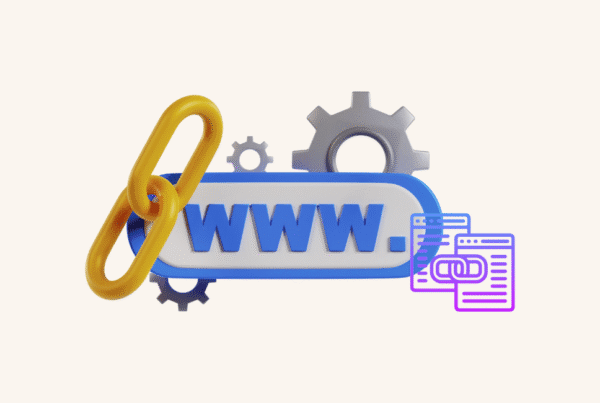Updated: 14 November 2023 • 7 minutes Read
Corporations often manage multiple websites to enhance SEO, attract potential customers, and safeguard their brand. They use different domains for distinct purposes and goals.
This article will highlight the advantages of this approach and suggest ideal domains for these purposes.
 What are multiple domains?
What are multiple domains?
Generally, two common approaches to utilising a single domain are ‘subdomains’ and ‘subdirectories’.
Subdomain
The domains are used for specific purposes in the format “OOO.companyname.com.”
- Homepage: https://www.companyname.com/
- Support page: https://support.companyname.com/
- Shopping page: https://shop.companyname.com/
Subdirectory
The domains are used for specific purposes in the format “companyname.com/OOO/.”
- Homepage: https://www.companyname.com/
- Support page: https://www.companyname.com/support/
- Shopping page: https://www.companyname.com/shop/
Multiple domains
The domains are used for specific purposes in the format “companyname.OOO.”
- Homepage: https://www.companyname.com/
- Support page: https://www.companyname.support/
- Shopping page: https://www.companyname.shop/
Using the former approach is cost-effective as it involves a single domain. On the other hand, the latter approach, which requires acquiring additional domains, brings multiple benefits, as mentioned below.
Advantages of using multiple domains
- Improvement in URL visibility
One of the most noticeable advantages of using multiple domains is the enhanced visibility of URLs in search results.
For instance, consider the difference between the following in search results:
-
companyname.com/shop/〇〇
- companyname.shop/〇〇
The latter offers a more straightforward and intuitive URL, allowing users to quickly understand the website’s purpose by looking at the search results. In turn, simplifies the process of users finding the website that suits their needs.
-
- SEO measures
(i) Reducing the risk of negative evaluation of the page
When operating with a single domain, there’s a risk that if that domain’s search engine ranking drops, it could affect all linked pages on that domain. On the other hand, when you operate with multiple domains, each domain is independent, reducing the risk of interference. Utilising multiple domains can help isolate potential issues and minimise the risk of a drop in search engine ranking affecting all of your web pages.
Subdomains:
Homepagecompanyname.comRisk of being affected if the ranking dropsSupport Pagesupport.companyname.comPotentially affectedShopping Pagshop.companyname.comPotentially affectedSubdirectories:
Homepagecompanyname.comRisk of being affected if the ranking dropsSupport Pagecompanyname.com/supportPotentially affectedShopping Pagcompanyname.com/shopPotentially affectedMultiple (Multi) Domains:
Homepagecompanyname.comRisk of being affected if the ranking dropsSupport Pagecompanyname.supportNo impactShopping Pagcompanyname.shopNo impact(ii) Helps to increase the number of backlinks
For example, let’s consider a scenario where you have a website called ‘example.shop’, an e-commerce site, and you’ve also launched ‘example.blog’ separately.
You can create blog articles on ‘example.blog’ related to your products and services and include links to your main site’s product and service pages. By doing so, the number of backlinks to your main site increases.
As a result:
More backlinks = More referrals = High-quality website in Google’s eyes
This can make your website more likely to appear in higher positions in search results. However, it’s important to note that for Google to consider your site high-quality, you must publish valuable content for users and update it regularly. Failing to do so may not yield the expected results, so please keep that in mind.
(iii) Aim to monopolise search results
According to current Google search result guidelines, a single domain may have multiple pages displayed in the same search result, typically up to three pages at most.
However, when it comes to multiple domains, each one is evaluated independently in search results. If you manage a website with multiple domains and consistently enhance the reputation of each, it’s possible to achieve top rankings for each domain if things go well.
-
Acquiring potential customers
Suppose you sell a wide range of products and services on ‘example.shop.’ In such cases, it’s challenging to cater to a specific audience – those who are well-informed, deeply interested in your offerings and can make informed comparisons. Your reach will be limited to those who fit this profile.
To broaden your audience, target potential customers who are already aware of your products and services but haven’t compared them. You can achieve this by creating informative articles about your offerings on ‘example.blog’ incorporating various keywords.
Blogs offer valuable data and insights, making enriching your blog and owned media content essential. This approach will guide individuals to your main site successfully.
-
Brand Protection
One aspect often underestimated when using domains is brand protection. Phishing scams have surged as a significant concern recently.
More frequently, individuals receive emails with names of well-known e-commerce sites, credit card companies, telecom providers, and the like or encounter websites that closely mimic genuine companies, redirecting unsuspecting users to these fraudulent sites.
For example,
Official website: https://www.companyname.com/
If so, as a fake site: https://www.companyname.net/ or https://www.companyname.ph/
It will be difficult for users to detect fake websites like these. As domains like “.net” have been around for a long time, and “.ph” is widely recognised as a Philippines domain, which often instils a sense of safety compared to unfamiliar domains.
Nevertheless, some users may still mistake such sites for official ones. When third parties operate misleading websites, it can harm your brand image. To prevent these issues, consider acquiring potentially misused domains in bulk and blocking them from third-party acquisition.
Furthermore, you can implement redirect processes to guide users from these protective domains to your main website, attracting customers.
Domains recommended for multiple uses
There are various types of websites, including owned media, EC sites, corporate sites, promotion sites, service sites, and brand sites.
For example, please try increasing the number of backlinks by operating your website by dividing the domain according to the type below.
TLDs Extension |
Purpose |
.company |
corporate site |
.shop |
EC site |
.blog |
Blog/Owned Media |
.me |
Members-only site |
.art |
NFT platform |
.tv |
video site |
.news |
news site |
.promo |
Promotion site |
.pro |
Vendor search/brokerage site |
.salon |
General salon |
.law |
Lawyers/legal institutions in general |
.game |
Game site |
.movie |
Movie sites |
.restaurant |
restaurant site |
.community |
community site |
.yoga |
Yoga in general |
.school |
General lessons |
Summary
In this discussion, we’ve highlighted the advantages of acquiring multiple domains. For corporations managing high-traffic websites, it’s crucial to secure various certifications for services, departments, and products and as a measure for brand protection. We recommend using distinct domains for each purpose and securing the primary domains if they are available.
Topics: Domain
Don’t forget to share this post!


